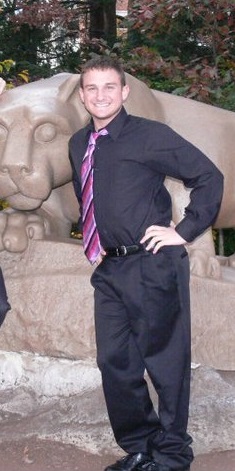| Prince Frederick Hall | Christopher John CioffiThe Pennsylvania State UniversitySTRUCTURAL OPTION |
| 425 Colonnade Dr. University of Maryland, College Park, MD 20742
|
Student Biography |
 |
|---|---|
Christopher Cioffi is a fifth year Architectural Engineering student at the Pennsylvania State University focusing on structural systems. He will graduate in May of 2014 with a BAE in Architectural Engineering. He is also going to graduate with a minor in Architectural Studies. He is scheduled to take the Fundamentals of Engineering Exam this fall and hopes to gain EIT status upon graduation. Throughout Christopher’s collegiate career he served as THON Chair for his fraternity, Delta Lambda Phi, and a mentor in the Student Society for Architectural Engineers. For his fraternity, Christopher organized multiple community service events and trips to help raise large sums of money for the largest student philanthropy in the world. Christopher took leadership, monitoring over thirty plus members during trips and kept their morale up during the colder seasons of fundraising. Chris’ dedication to finding a cure for cancer went much deeper than fundraising; he stood up in 2012 for forty-six hours during the Penn State’s Dance Marathon to help raise 12.6 million dollars for The Four Diamonds Fund. His efforts to help find a cure will be continued for the rest of his life.
|
|
Note: While great efforts have been taken to provide accurate and complete information on the pages of CPEP, please be aware that the information contained herewith is considered a work‐inprogress for this thesis project. Modifications and changes related to the original building designs and construction methodologies for this senior thesis project are solely the interpretation of Victoria Interval. Changes and discrepancies in no way imply that the original design contained errors or was flawed. Differing assumptions, code references, requirements, and methodologies have been incorporated into this thesis project; therefore, investigation results may vary from the original design.
|
|---|